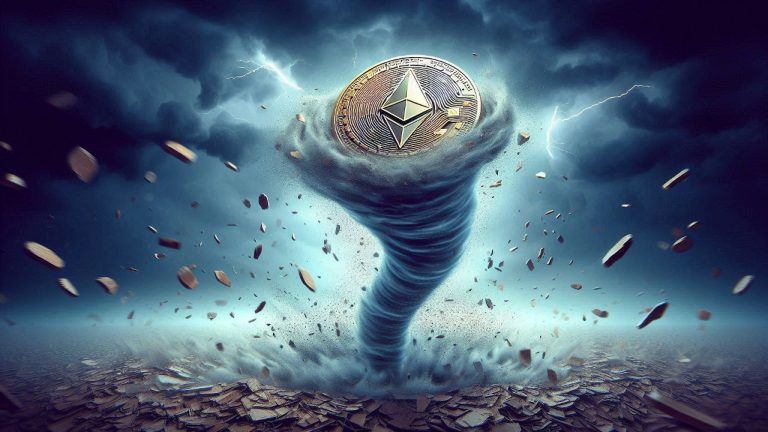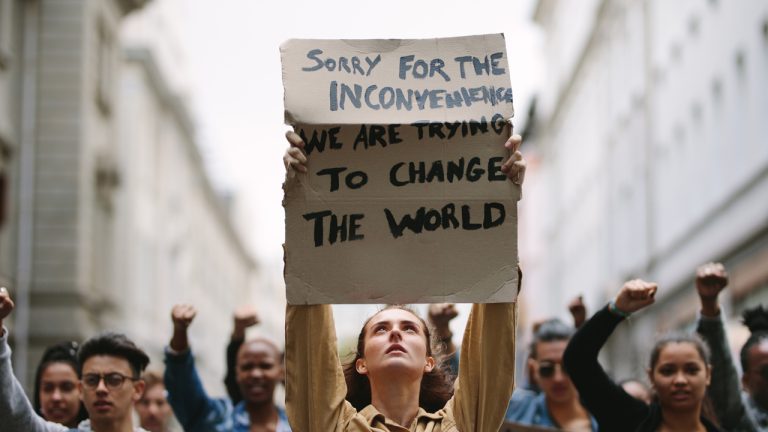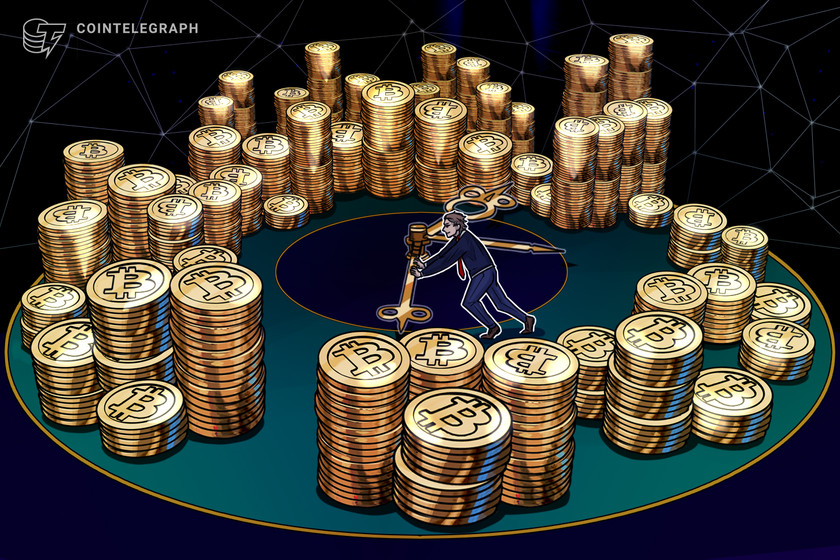 A staff report published by several New York Federal Reserve employees found that Ethereum “is not immune to censorship and cooperation,” which depends on the roles of several actors across the network. The paper examined how the network performed after Tornado Cash, one of the main mixers in the blockchain, was sanctioned by the OFAC. […]
A staff report published by several New York Federal Reserve employees found that Ethereum “is not immune to censorship and cooperation,” which depends on the roles of several actors across the network. The paper examined how the network performed after Tornado Cash, one of the main mixers in the blockchain, was sanctioned by the OFAC. […]
Verified Twitter users will be allowed to view 10,000 posts per day, while new, unverified accounts will get 500 under the new limits.
Social media platform Twitter is temporarily limiting the number of posts that users will be allowed to read per day, after seeing “extreme levels of data scraping and system manipulation,” according to executive chairman Elon Musk.
In a July 1 post, Musk said the temporary limits will see verified accounts capped at 10,000 posts per day, while unverified and new, unverified accounts are capped at 1,000 and 500 posts per day respectively:
Now to 10k, 1k & 0.5k
— Elon Musk (@elonmusk) July 1, 2023
Twitter users had been reporting issues on the platform over the last few days including the inability to retrieve tweets, missing timelines, and being met with a "rate limited exceeded" message, leading to the hashtag #TwitterDown #TwitterFail to trend in certain jurisdictions.

Real-time outage monitor website Downdetector has seen thousands of user-submitted reports claiming Twitter outages over the last 24 hours.
France, the United Kingdom, Germany, and the East and West Coasts of the United States appear to be the most affected regions, according to Is The Service Down.

Musk didn’t clarify what may be responsible for scraping Twitter’s data and didn’t elaborate on the root cause behind the “system manipulation” claim, but said that their data was being "pillaged" so much it was degrading service for users.
Some suggest that the extreme "data scraping" has been caused by web-browsing-enabled artificial intelligence chatbots, such as OpenAI's GPT-4.
According to Twitter’s developer documents, rate limits are imposed to manage the volume of requests made to Twitter’s Application Program Interface (API).
“These limits help us provide the reliable and scalable API that our developer community relies on,” the document states.
Related: Twitter suspends memecoin-linked AI bot after Elon Musk’s ‘scam crypto’ claim
Jack Dorsey, the co-founder and former CEO of Twitter was among the few that defended the recent moves in a July 2 post, noting that “Running Twitter is hard” and that the decision was likely made for the greater good of the platform.
He added that he’d like to see Twitter move to a “truly censorship-resistant open protocol” like Bitcoin and Nostr:
And I do hope they consider building on truly censorship-resistant open protocols like bitcoin and nostr to help ease that burden. Good for all, and critical to preserve the open internet.
— jack (@jack) July 1, 2023
Outside of the office, Musk appears to be training for a potential mixed martial arts cage fight with fellow billionaire and Meta CEO Mark Zuckerberg.
Magazine: AI Eye: Make 500% from ChatGPT stock tips? Bard leans left, $100M AI memecoin
 While bitcoin’s effect on the environment has been discussed at length over the last two years, the latest trend of artificial intelligence (AI) software is now being criticized for its carbon footprint. According to several headlines and academic papers this year, AI consumes significant electricity and leverages copious amounts of water to cool data centers. […]
While bitcoin’s effect on the environment has been discussed at length over the last two years, the latest trend of artificial intelligence (AI) software is now being criticized for its carbon footprint. According to several headlines and academic papers this year, AI consumes significant electricity and leverages copious amounts of water to cool data centers. […]
If Back and Finney’s $10 million price prediction becomes true, the BTC market cap will reach approximately $200 trillion.
Blockstream CEO Adam Back believes the price of Bitcoin (BTC) could reach $10 million by the end of the sixth halvening in 2032, as long as Bitcoin layer-2 technology and wallet infrastructure improves.
In a Feb. 12 Twitter thread, Back, one of the contributors to Bitcoin core, was explaining to his 509,000 followers in what situation Hal Finney’s $10 million price prediction for BTC could come true.
He noted that BTC has doubled in price year-on-year on average since 2013 and explained that if that trend continues, BTC price would reach $10M along with a $200 trillion market cap in around nine years time.
early this year i was curious of the claim "bitcoin 2x's per year on average". it checks: the decade jan 2013 - dec 2022 #bitcoin went up 2.036x/year (1200x in a decade). if that continues we'll cross $10mil/BTC and $200 tril market cap by end of next 2 halvenings, about 9 years. pic.twitter.com/mqmO2SRdAv
— Adam Back (@adam3us) February 12, 2023
However, Back said that in order for that figure to be reached, improvements in Bitcoin layer-2 technologies and wallet infrastructure needs to be fast tracked to give time for these innovations to scale:
“i think things will get “interesting” over the next two halvings. and fast, we don't have much time to scale tech. we need somewhere for the next billion users to own their own UTXO, their own keys, with censorship-resistant cold storage. without weakening main-chain security.”
Back said that it “probably means sidechains/drivechains as a tradeoff. more lightning optimization [...] we don't have much time as tech takes time to mature, wallets, interop, integration.”
Responding to a comment, Back said he believes Bitcoin adoption hasn’t reached the bottom of the S-curve yet, as only 1-2% of the world population has tapped into Bitcoin. He predicts more investors will begin to “stack” BTC into cold storage wallets:
“given volatility, i think #bitcoin can overshoot wildly and tap one of these $100-300 trillion market caps, correct and then regain a steadier adoption over time. i suspect people with average entry points, relative to then current price won't have much incentive to sell in size.”
The CEO explained that part of that next wave of adoption may come from what he describes as “hyperbitcoinization spurts” — where people in hyperinflationary environments will “rush” to bitcoin:

Related: Blockstream CEO Adam Back talks Bitcoin over a game of Jenga
However, responding to another comment, Back also admitted that “we’ve utterly failed to financialize bitcoin” thus far. The cypherpunk suggested that Bitcoin could be used in mortgages where property is used as collateral and Bitcoin as the interest:
“the market in bitcoin-native financialisation is immature, almost untouched. bitcoin structured products, mortgages backed by real-estate but interest guaranteed by BTC, other products make bitcoin easier to use for more people, and match risk profiles. which creates more growth.”
Back added that in order to approach $10 million, BTC would also need to “displace” a significant proportion of store of value premiums in bonds, real estate, gold and stock portfolios.
You think bitcoin twitter is bullish? Hal Finney (@halfin), was calculating a bitcoin price of $10,000,000 per coin just ONE WEEK after the the genesis block on January 3rd, 2009.
— Doc (@DrBitcoinMD) August 23, 2019
Absolute legend. pic.twitter.com/5MptLhEYHL
BTC is currently priced at $21,800.

The community has been divided as to whether the NFT-like "digital artifacts" are the right fit for the Bitcoin ecosystem.
The recent launch of a nonfungible token (NFT) protocol on the Bitcoin mainnet has the crypto community divided over whether it’ll be good for the Bitcoin ecosystem.
The protocol, referred to as “Ordinals,” was created by software engineer Casey Rodarmor, who officially launched the program on the Bitcoin mainnet following a Jan. 21 blog post.
The protocol essentially allows for the Bitcoin version of NFTs — described as “digital artifacts” on the Bitcoin network.
These “digital artificats” can comprise of JPEG-like images, PDFs, video and audio formats.

The introduction of the protocol has the Bitcoin community divided however, with some arguing that it would offer more financial use cases for Bitcoin, while others say its straying away from Satoshi Nakamoto’s vision of Bitcoin as a peer-to-peer cash system.
Bitcoin bull Dan Held was one of those on board with the development, noting that it would drive demand for block space, and thus fees, while bringing more use cases to Bitcoin.
Why it's good:
— Dan Held (@danheld) January 29, 2023
- Brings more financial use cases to Bitcoin
- Drives more demand for block space (aka fees)
My take:
- If you pay a tx fee, it's not spam.
- Bitcoin is permissionless. Can't stop anyone from building it anyway.
Some have pointed out that these NFT-like structures have taken up block space on the Bitcoin network, which could drive up transaction fees.
BREAKING: NFTs ON #BITCOIN
— Bitcoin News ⚡ (@BitcoinNewsCom) January 29, 2023
Ordinals are taking up most of the BLOCKSPACE pic.twitter.com/Gxwq4vV8MI
Among those include “Bitcoin is Saving” on Twitter, suggesting to its 237,600 followers on Jan. 29 that “privileged wealthy white” people’s desire to put JPEGs as status symbols may exclude marginalized people from participating in the Bitcoin network.
Cryptocurrency researcher Eric Wall disagreed with the opinion that the in-built block size limit will prevent a rise in transaction fees.
Others, such as Blockstream CEO and Bitcoin core developer Adam Back wasn’t happy with meme culture being brought to Bitcoin, who suggested the developers to take the “stupidity” elsewhere:
"you can't stop them" well ofc! bitcoin is designed to be censor resistant. doesn't stop us mildly commenting on the sheer waste and stupidity of an encoding. at least do something efficient. otherwise it's another proof of consumption of block-space thingy.
— Adam Back (@adam3us) January 29, 2023
However, Ethereum bull and host of The Daily Gwei Anthony Sassano took a shot at the Blockstream CEO for wanting “undesirable” transactions to be censored — which many believe goes against the ethos of Bitcoin:
Adam Back and Luke Dashjr are both Bitcoin core developers who have encouraged censorship over the last 48 hours of these "undesirable" transactions
— sassal.eth (@sassal0x) January 30, 2023
So no, it isn't just Bitcoin maximalists - it's actual Bitcoin core developers
Related: Stacks ecosystem becomes #1 Web3 project on Bitcoin
In a blog post, Rodarmor explained that the NFT-like structures are created by inscribing satoshis — the native currency of the Bitcoin network — with arbitrary content.
These inscribed satoshis — which are cryptographically represented by a string of numbers — can then be secured or transferred to other Bitcoin addresses, according to notes in Ordinal’s technical documentation:
“Inscribing is done by sending the satoshi to be inscribed in a transaction that reveals the inscription content on-chain. This content is then inextricably linked to that satoshi, turning it into an immutable digital artifact that can be tracked, transferred, hoarded, bought, sold, lost, and rediscovered.”
The inscriptions take place on the Bitcoin mainnet, no sidechain or separate token is needed, the document states.
Inscriptions are finally ready for Bitcoin mainnet.
— Casey Rodarmor (@rodarmor) January 20, 2023
Inscriptions are like NFTs, but are true digital artifacts: decentralized, immutable, always on-chain, and native to Bitcoin. https://t.co/a4dK7zdITS
It appears that only 277 digital artifacts have been inscripted thus far, according to the Ordinals website.
Interestingly, Rodarmor — admitted in an Aug. 25 interview on Hell Money Podcast that Ordinals was created to bring memes to life on Bitcoin:
“This is 100% a meme-driven development.”
 Since people are once again talking about self-custody as one of crypto’s unique strengths, I would like to remind everyone about an equally important fundamental value proposition of crypto that, in the early days, was touted as the killer feature. I’m talking about censorship resistance. The following opinion editorial was written by Bitcoin.com CEO Dennis […]
Since people are once again talking about self-custody as one of crypto’s unique strengths, I would like to remind everyone about an equally important fundamental value proposition of crypto that, in the early days, was touted as the killer feature. I’m talking about censorship resistance. The following opinion editorial was written by Bitcoin.com CEO Dennis […] The payment processing giant Paypal has revealed it has partnered with the nonprofit organization the Anti-Defamation League (ADL). According to the announcement, Paypal is researching transactions settled on the payment network that allegedly fund hate groups and extremism. Paypal to Study Transactions With the Anti-Defamation League A report from Reuters notes that Paypal is studying […]
The payment processing giant Paypal has revealed it has partnered with the nonprofit organization the Anti-Defamation League (ADL). According to the announcement, Paypal is researching transactions settled on the payment network that allegedly fund hate groups and extremism. Paypal to Study Transactions With the Anti-Defamation League A report from Reuters notes that Paypal is studying […]